O caso comercial para roupas ativas sustentáveis: atendendo à demanda do consumidor & Aprimorando o valor da marca?
As preocupações ambientais estão cada vez mais impulsionando as decisões de compra do consumidor. Marcas que ignoram a sustentabilidade correm o risco de perder participação de mercado para concorrentes mais conscientes, particularmente na categoria de roupas ativas, onde a conexão com a natureza e o bem-estar é fundamental.
Awear ativo sustentável representa um imperativo ambiental e uma oportunidade de negócio. 67% dos consumidores consideram a sustentabilidade ao comprar roupas ativas e 73% estão dispostos a pagar mais por produtos sustentáveis. Marcas que incorporam materiais reciclados, algodão orgânico ou tecidos biodegradáveis podem comandar preços premium enquanto atrai consumidores conscientes.
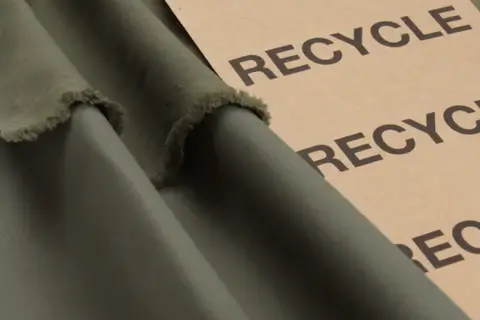
Por ter, adotamos a sustentabilidade em nossa fabricação de roupas ativas, oferecendo opções de poliéster recicladas, misturas de algodão orgânico e soluções de embalagens ecológicas. Nossa experiência mostrou que a sustentabilidade não é boa apenas para o planeta - é bom para os negócios. Deixe -me compartilhar o que aprendemos sobre o caso de negócios atraente para roupas ativas sustentáveis.
Por que a sustentabilidade está se tornando um imperativo do mercado?
As preferências do consumidor estão mudando dramaticamente para opções sustentáveis. As marcas que não reconhecem esse risco de tendência se tornam obsoletas à medida que as alternativas conscientes do ecologicamente consciente capturam participação de mercado.
67% dos consumidores globais dizem que consideram a sustentabilidade ao comprar roupas ativas, e essa porcentagem aumenta para 73% entre os millennials. Na categoria Fitness and Wellness, especificamente, 78% dos consumidores expressam preocupação com o impacto ambiental de suas compras, tornando a sustentabilidade um diferencial importante nas decisões de compra.
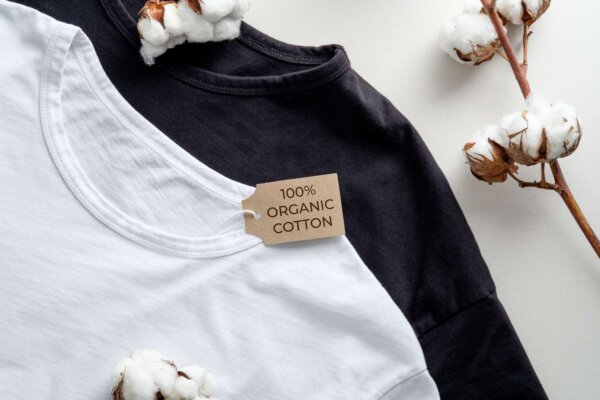
Quando começamos a fabricar roupas ativas, a sustentabilidade foi considerada um ponto de venda de nicho. Hoje, tornou -se uma expectativa convencional, principalmente nesta categoria. Eis por que a sustentabilidade se tornou um imperativo de mercado:
Mudança de valores do consumidor
Pesquisas recentes de mercado revelam mudanças dramáticas nas prioridades do consumidor:
| Tendência do consumidor | Percentagem | Implicação nos negócios |
|---|---|---|
| Disposto a pagar mais por produtos sustentáveis | 73% | Oportunidade para preços premium |
| Considere o impacto ambiental importante nas decisões de compra | 67% | Sustentabilidade como vantagem competitiva |
| Procure ativamente marcas com fortes valores ambientais | 58% | Oportunidade de lealdade à marca |
| Trocaram de marcas com base em preocupações ambientais | 35% | Risco de perda de cliente se não estiver lidando com a sustentabilidade |
Diferenças geracionais
As preferências de sustentabilidade variam significativamente por geração:
- Gen Z (18-24): 83% acreditam que as empresas devem abordar questões ambientais
- Millennials (25-40): 73% dizem que as preocupações ambientais afetam suas decisões de compra
- Gen X (41-56): 60% disposto a pagar mais por produtos sustentáveis
- Baby Boomers (57-75): 52% consideram a sustentabilidade nas decisões de compra
Com as gerações mais jovens representando o mercado principal de roupas ativas, suas preferências de sustentabilidade mais fortes são particularmente relevantes para essa categoria.
Preocupações específicas para roupas ativas
A indústria de roupas ativas enfrenta um escrutínio particular:
- Tecidos sintéticos como poliéster e nylon são à base de petróleo e não biodegradáveis
- Os processos de produção podem ser de água e com uso intensivo de produtos químicos
- As abordagens de moda rápida levaram a resíduos excessivos
- Os consumidores veem cada vez mais uma desconexão entre produtos focados em bem-estar e práticas ambientalmente prejudiciais
Essas preocupações criaram uma oportunidade significativa de mercado para marcas que podem abordar autenticamente a sustentabilidade, mantendo o desempenho e o estilo.
Para uma visão geral abrangente do mercado de roupas ativas e das tendências do consumidor, visite nossa análise detalhada: Compreendendo a roupa ativa & Mercado de desgaste de ioga: tendências, demografia & Oportunidades para compradores B2B.
Quais são os benefícios financeiros da roupa ativa sustentável?
Muitas empresas hesitam em investir em sustentabilidade devido a preocupações com custos e retornos. Compreender o caso completo de negócios ajuda a justificar esses investimentos.
O retorno do investimento para roupas ativas sustentáveis vem através de vários canais: potencial de preços premium (15 a 30% de preços mais altos), aumento da lealdade do cliente (taxas de retenção 27% mais altas para marcas sustentáveis), maior reputação da marca, vantagens de colocação de varejo e risco reduzido de futuros problemas de conformidade regulatória.
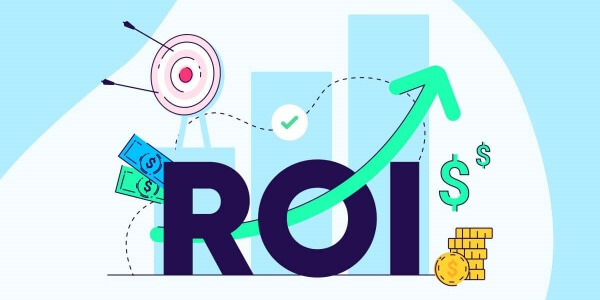
Por ter, vimos em primeira mão como os investimentos em sustentabilidade entregam retornos de negócios tangíveis. Aqui está o caso de negócios abrangente:
Benefícios financeiros
Potencial de preços premium
Pesquisas de mercado mostram que os consumidores pagarão mais por produtos sustentáveis:
- 73% pagarão pelo menos 10% a mais por opções sustentáveis
- 32% pagarão 25% ou mais por produtos com fortes credenciais ambientais
- Em roupas ativas especificamente, o comando de opções sustentáveis de 15 a 30% de prêmios de preço
Aumento do volume de vendas
A sustentabilidade impulsiona as decisões de compra:
- 67% dos consumidores têm maior probabilidade de comprar produtos claramente marcados como ecologicamente corretos
- As marcas sustentáveis de roupas ativas geralmente vêem 15-25% mais altas de conversão
- Os varejistas relatam 10-20% mais altas de venda de taxas de produtos para produtos ativos sustentáveis
Lealdade aprimorada do cliente
A sustentabilidade cria relacionamentos mais fortes do cliente:
- Marcas com fortes credenciais de sustentabilidade desfrutam de retenção de clientes 27% mais alta
- 41% dos consumidores têm maior probabilidade de recomendar marcas sustentáveis para amigos
- O valor da vida útil do cliente aumenta em aproximadamente 22% para produtos sustentáveis
Aprimoramento do valor da marca
Benefícios de reputação
A sustentabilidade fortalece a percepção geral da marca:
- 64% dos consumidores (e 72% dos millennials) têm uma imagem mais positiva de marcas com compromissos comprovados de sustentabilidade
- A cobertura da mídia é 2,5x mais provável para marcas com histórias de sustentabilidade autênticas
- As taxas de engajamento de mídia social são 35% maiores para o conteúdo sustentável do produto
Diferenciação competitiva
No mercado de roupas ativas cada vez mais lotado:
- A sustentabilidade cria diferenciação significativa além da funcionalidade básica
- 52% dos consumidores consideram o impacto ambiental ao escolher entre produtos de roupas ativas semelhantes
- Credenciais de sustentabilidade ajudam a evitar pressões de preços de commodities
Vantagens de colocação no varejo
Os principais varejistas priorizam cada vez mais produtos sustentáveis:
- Muitos varejistas estabeleceram requisitos de sustentabilidade para novos fornecedores
- A colocação de varejo premium é frequentemente alocada para opções sustentáveis
- Alguns varejistas oferecem suporte de marketing especificamente para produtos sustentáveis
Mitigação de risco
Conformidade regulatória
A adoção proativa da sustentabilidade reduz os riscos futuros:
- Regulamentos ambientais estão se tornando mais rigorosos globalmente
- A adoção antecipada impede as mudanças forçadas caras posteriormente
- Alguns mercados estão implementando leis de responsabilidade do produtor estendido
Proteção de reação ao consumidor
A sustentabilidade protege contra publicidade negativa:
- Marcas sem compromissos ambientais enfrentam um escrutínio crescente
- As mídias sociais ampliam as preocupações ambientais rapidamente
- As acusações de lavagem verde podem causar danos significativos à marca
Para obter informações detalhadas sobre estratégias de preços e margens de lucro para roupas ativas sustentáveis, explore nossa análise: Maximizando o seu ROI: roupas ativas & Ioga usam preços por atacado, margens de varejo & Análise de lucratividade.
Que opções de materiais sustentáveis estão disponíveis para roupas ativas?
Muitas empresas desconhecem a gama de materiais sustentáveis agora disponíveis para roupas ativas. Compreender essas opções é essencial para tomar decisões informadas de desenvolvimento de produtos.
Os materiais sustentáveis de roupas ativas incluem poliéster reciclado (feitos de garrafas plásticas pós-consumo), nylon reciclado (geralmente de redes de pesca e resíduos de carpetes), algodão orgânico (cultivado sem pesticidas prejudiciais) e tecidos inovadores de desempenho natural como liocell à base de eucalipto. Cada um oferece diferentes características de desempenho e benefícios de sustentabilidade.
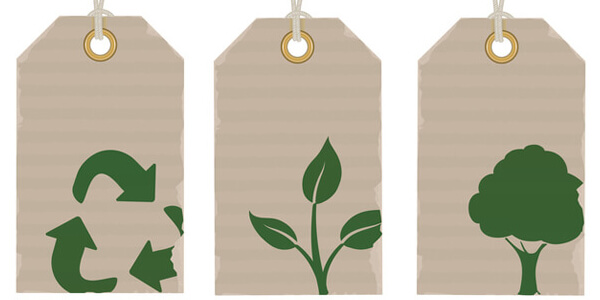
No tendo, desenvolvemos roupas ativas usando vários materiais sustentáveis. Aqui está nossa avaliação das principais opções:
Materiais sintéticos reciclados
Poliéster reciclado
Benefícios ambientais:
- Desvia garrafas plásticas de aterros e oceanos
- Requer 30-50% menos energia que o poliéster virgem
- Reduz a dependência do petróleo
- Produz 54% menos emissões de carbono que o poliéster virgem
Características de desempenho:
- Desempenho quase idêntico ao poliéster virgem
- Excelente umidade que absorve
- Boa durabilidade e rápida de cor
- Propriedades de secagem rápida
Considerações de negócios:
- 10-15% de prêmio de custo sobre poliéster virgem
- Forte história de marketing (garrafas para o fabricante)
- Amplamente disponível em várias qualidades
- Pode ser certificado através do GRS (padrão reciclado global)
Nylon reciclado
Benefícios ambientais:
- Frequentemente feito de redes de pesca, resíduos de carpetes ou resíduos pré-consumidores
- Reduz o desperdício em oceanos e aterros
- Requer 80% menos água que o nylon virgem
- Produz 90% menos CO₂ que o Nylon Virgin
Características de desempenho:
- Comparável ao Nylon Virgin na maioria das propriedades
- Excelente alongamento e recuperação
- Sensação de mão suave
- Durável e resistente à abrasão
Considerações de negócios:
- 15-25% de prêmio de custo sobre nylon virgem
- Disponibilidade limitada, mas crescente
- História particularmente convincente para nylon de resíduos oceânicos
- Pode ser certificado por GRS
Materiais naturais e semi-sintéticos
Algodão orgânico
Benefícios ambientais:
- Cultivado sem pesticidas ou fertilizantes sintéticos
- Usa 88% menos água do que o algodão convencional
- Promove a saúde e a biodiversidade do solo
- Reduz a exposição aos agricultores a produtos químicos nocivos
Características de desempenho:
- Respirabilidade e conforto naturais
- Sensação de mão suave
- Propriedades hipoalergênicas
- Melhor para atividades de intensidade baixa a moderada
Considerações de negócios:
- 20-30% de prêmio de custo sobre o algodão convencional
- Requer mistura com elastane para alongamento
- Pode ser certificado através de GOTS (padrão têxtil orgânico global)
- Forte apelo a consumidores ecológicos
Lyocell/Tencel
Benefícios ambientais:
- Feito de polpa de madeira colhida de forma sustentável
- Processo de produção em circuito fechado recicla 99% dos solventes
- Material biodegradável
- Requer menos água do que algodão
Características de desempenho:
- Gerenciamento de umidade natural
- Textura suave e sedosa
- Respirável e regulador de temperatura
- Naturalmente inibe o crescimento bacteriano
Considerações de negócios:
- 15-25% de prêmio de custo sobre tecidos convencionais
- Frequentemente misturado com outras fibras para o desempenho
- Disponibilidade crescente e inovação
- Potencial de posicionamento de luxo
Gráfico de comparação de materiais
| Material | Prêmio de custo | Nível de desempenho | Melhor para |
|---|---|---|---|
| Poliéster reciclado | 10-15% | Excelente | Atividades de alta intensidade, gerenciamento de umidade |
| Nylon reciclado | 15-25% | Excelente | Yoga, atividades de estúdio, peças de compressão |
| Misturas de algodão orgânico | 20-30% | Bom | Atividades de baixo impacto, pele sensível |
| Lyocell/Tencel | 15-25% | Muito bom | Posicionamento premium, regulação da temperatura |
Para obter informações detalhadas sobre materiais e tecnologia ativos, visite nosso guia abrangente: Roupas ativas & Tecnologia de uso de ioga & Materiais: um guia do comprador para tecidos de desempenho, construção & Durabilidade.
Como você implementa uma estratégia sustentável de roupas ativas?
Muitas empresas lutam para implementar a sustentabilidade de maneira eficaz. Sem uma abordagem estratégica, os esforços podem ser fragmentados, ineficazes ou vulneráveis a acusações de lavagem verde.
A implementação de uma estratégia de moda ativa sustentável bem -sucedida requer uma abordagem em fases: conduzindo uma avaliação de sustentabilidade dos produtos atuais, identificando áreas prioritárias para melhoria, desenvolvendo objetivos claros de sustentabilidade, selecionando materiais e processos apropriados, obtendo certificações relevantes e criando marketing autêntico que evita a lavagem verde.
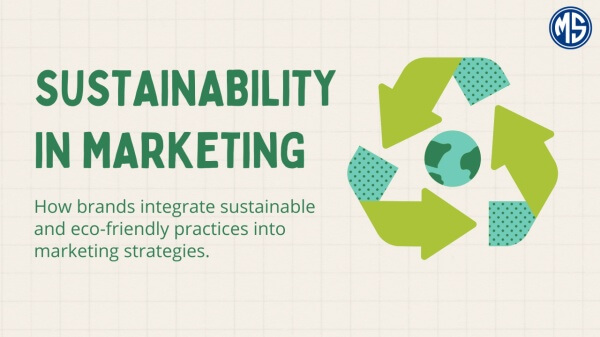
Por ter, ajudamos nossos parceiros a desenvolver e implementar estratégias eficazes de sustentabilidade. Aqui está a nossa abordagem recomendada:
Fase 1: Avaliação e configuração de metas
Comece entendendo seu impacto ambiental atual:
- Avaliação do ciclo de vida do produto: Avalie o impacto ambiental em todo o ciclo de vida do produto
- Análise de material: Avalie os materiais atuais para preocupações com a sustentabilidade
- Mapeamento da cadeia de suprimentos: Identifique os principais hotspots ambientais em sua cadeia de suprimentos
- Benchmarking concorrente: Entenda o que os outros no mercado estão fazendo
Defina metas claras e mensuráveis de sustentabilidade:
- Alvos materiais: e.g., "50% recycled content by 2024"
- Redução de carbono: e.g., "30% reduction in carbon footprint by 2025"
- Redução de resíduos: e.g., "Zero waste to landfill from production by 2023"
- Conservação de água: e.g., "40% reduction in water usage by 2024"
Fase 2: Estratégia de Implementação
Desenvolva um plano de implementação em fases:
Substituição material
- Comece com produtos principais: Comece com seus best -sellers para obter o máximo impacto
- Abordagem híbrida: Considere misturas de materiais sustentáveis e convencionais como uma transição
- Teste de desempenho: Garanta que as alternativas sustentáveis atendam aos requisitos de desempenho
- Análise de custos: Calcule o ROI, incluindo possíveis oportunidades de prêmio de preço
Melhorias da cadeia de suprimentos
- Seleção de parceiros de fabricação: Escolha parceiros com credenciais de sustentabilidade
- Otimização do processo: Identifique oportunidades de redução de água e energia
- Eficiência de transporte: Otimizar métodos de envio e embalagem
- Redução de resíduos: Implementar programas de eficiência de corte e reciclagem de sucata
Estratégia de certificação
- Identifique as certificações relevantes: Selecione certificações que correspondem às suas reivindicações
- Desenvolva sistemas de documentação: Crie processos para rastrear e verificar reivindicações de sustentabilidade
- Verificação de terceiros: Envolver a verificação independente de reivindicações de sustentabilidade
- Melhoria contínua: Planeje a manutenção e expansão em andamento de certificação
Fase 3: Marketing e Comunicação
Desenvolva mensagens autênticas de sustentabilidade:
- Ser específico: Use fatos concretos em vez de reivindicações vagas
- Ser transparente: Reconheça as áreas ainda sendo melhoradas
- Ser educacional: Ajude os consumidores a entender o impacto de suas escolhas
- Evite lavar verde: Não exagere os benefícios ambientais
Canais de comunicação eficazes:
- Rotulagem de produto: Informações claras sobre sustentabilidade sobre tags e embalagens
- Conteúdo do site: Seção de sustentabilidade dedicada com informações detalhadas
- Mídia social: Atualizações regulares sobre iniciativas de sustentabilidade e progresso
- Treinamento da equipe: Garanta que os membros da equipe possam explicar com precisão os recursos de sustentabilidade
Estrutura de cálculo de ROI
Ao avaliar os investimentos em sustentabilidade, considere esta estrutura:
| Categoria de investimento | Aumento típico de custo | Retorno potencial | Período de retorno |
|---|---|---|---|
| Materiais reciclados | 10-15% | 15-25% de prêmio de preço | Imediato a 6 meses |
| Materiais orgânicos | 20-30% | 20-30% de prêmio de preço | Imediato a 6 meses |
| Embalagem sustentável | 5-15% | Melhoria de conversão de 5 a 10% | 6 a 12 meses |
| Certificação de sustentabilidade | US $ 2.000 a 10.000 anualmente | 10-20% aumentou a colocação do varejista | 6-18 meses |
Para obter orientações sobre o desenvolvimento de sua própria linha de moda ativa sustentável, visite nosso recurso detalhado: Sua marca, seu produto: o guia completo para a marca própria (OEM/ODM) Ativa & Manufatura de uso de ioga.
Conclusão
O caso de negócios para roupas ativas sustentáveis é atraente e multifacetado. Além de atender à crescente demanda do consumidor por produtos ambientalmente responsáveis, as iniciativas de sustentabilidade oferecem benefícios de negócios tangíveis por meio de oportunidades de preços premium, aumento da lealdade do cliente, valor aprimorado da marca e mitigação de riscos.
Por ter, estamos comprometidos em apoiar nossos parceiros no desenvolvimento de roupas ativas verdadeiramente sustentáveis que oferecem benefícios ambientais e comerciais. Ao abraçar a sustentabilidade como uma estratégia de negócios central, e não como uma reflexão tardia, as marcas podem se posicionar para obter sucesso a longo prazo neste mercado em rápida evolução.
Para uma visão geral abrangente de toda a categoria de roupas ativas, incluindo tendências de mercado e oportunidades de negócios, visite nosso Guia Ultimate B2B para o fornecimento & Vendendo roupas ativas & Desgaste de ioga.
Perguntas frequentes (FAQ)
Qual é o recurso de sustentabilidade mais importante para os consumidores de roupas ativas?
Embora as preferências variem de acordo com o segmento, a pesquisa mostra que o conteúdo reciclado (particularmente o poliéster reciclado de garrafas plásticas) é o recurso de sustentabilidade mais valorizado universalmente, seguido de uso reduzido de água e materiais orgânicos.
Quanto mais os consumidores estão dispostos a pagar por roupas ativas sustentáveis?
Pesquisas de mercado indicam que 73% dos consumidores pagarão pelo menos 10% a mais por opções sustentáveis, enquanto 32% pagarão prêmios de 25% ou mais por produtos com fortes credenciais ambientais.
Quais certificações de sustentabilidade são mais valiosas para roupas ativas?
O GRS (Global Recycled Standard) é mais valioso para reivindicações de conteúdo reciclado, GOTS (padrão têxtil orgânico global) para materiais orgânicos e bluesign® para a produção geral ambiental responsável. O Oeko-Tex Standard 100 fornece credibilidade essencial à segurança.
Como as pequenas marcas podem competir com grandes empresas de sustentabilidade?
As pequenas marcas geralmente podem implementar iniciativas de sustentabilidade mais rapidamente e autenticamente do que as grandes empresas. Concentre-se na comunicação transparente, nos benefícios ambientais específicos e na criação de conexões genuínas com os consumidores com sustentabilidade.
É melhor se concentrar em materiais sustentáveis ou manufatura sustentável?
Ambos são importantes, mas os materiais sustentáveis geralmente têm visibilidade mais imediata do consumidor e impacto no marketing. No entanto, uma abordagem abrangente abordando os materiais e os processos de fabricação cria o posicionamento mais forte da sustentabilidade.
Como evito as acusações de lavagem verde ao comercializar roupas ativas sustentáveis?
Seja específico sobre reivindicações ambientais, forneça evidências e certificações para fazer backup, reconhecer as áreas ainda sendo aprimoradas e concentre -se no progresso e não na perfeição. A transparência sobre sua jornada de sustentabilidade cria credibilidade.
Obtenha uma cotação grátis para seus projetos de roupas ativas
